#medical history
Text



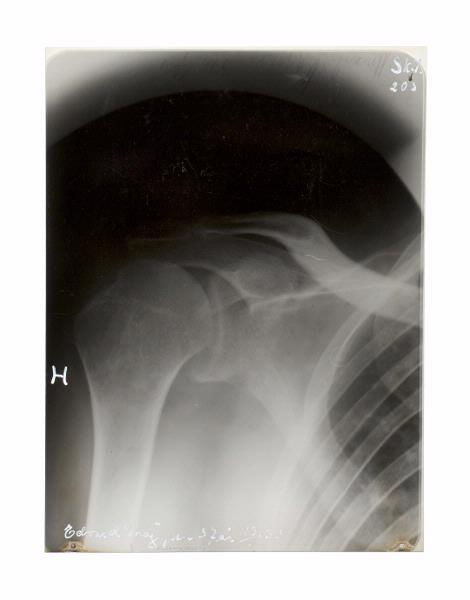

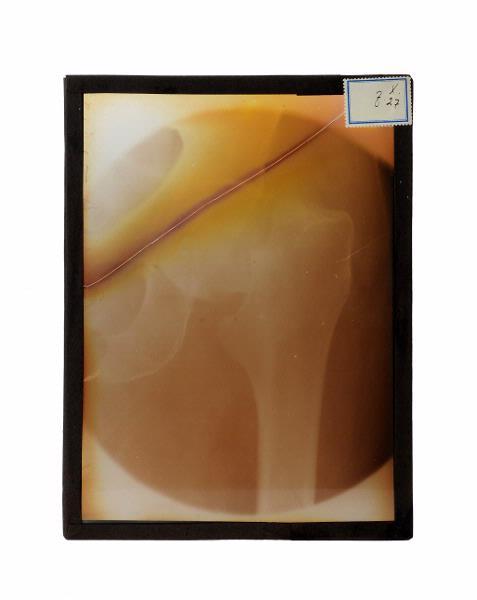
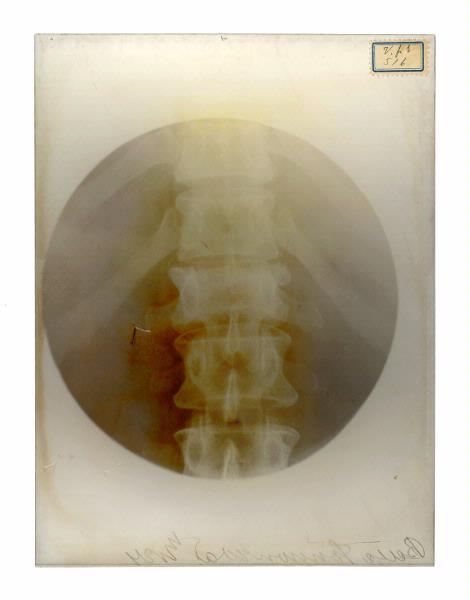

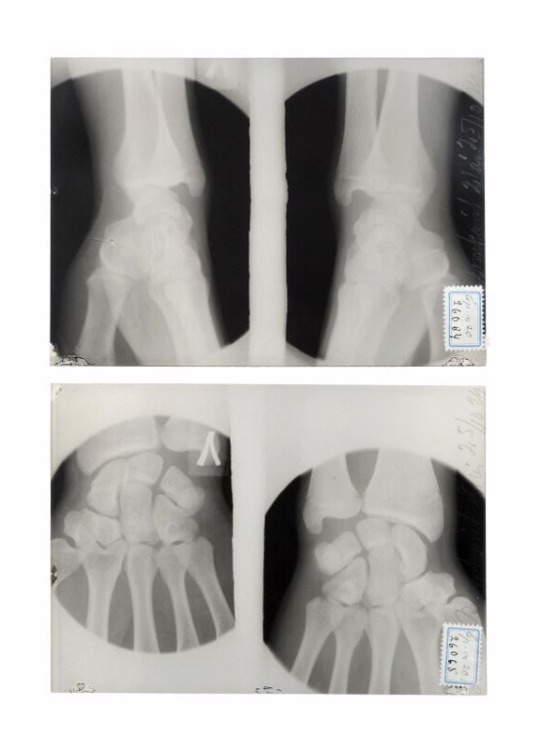

x-ray images, 1916-1931
#anatomy#x-ray image#x-ray images#vintage#medical history#x-ray#radiology#radiography#1910's#20's#30's#*
3K notes
·
View notes
Text
*TW for amateur surgery*
Okay. It's 1942.
There's a US submarine, USS Silversides, operating in HIGHLY dangerous Japanese waters.
And one poor bastard, some machinists mate, gets a case of acute appendicitis
They can't radio for an airlift because the Japanese will find them
But they don't have a surgeon on board.
The only medical person they have is a fucking pharmacist's mate
As in, a pill counter guy
As in, the cold and flu and small stitches guy
Not the "cut open a machinists mate on a moving submarine" guy
Not even 3 steps below that guy
But he's all they have, and if they do nothing, this guy is gonna fucking die.
So this motherfucker
Risks a court martial
To do surgery
Without an OR
With bent fucking spoons as makeshift retractors
And the patient's coworkers as assistants
He somehow miraculously fucking gives the dude spinal anesthesia, correctly
Opens the abdomen
Cuts out the appendix (somehow without rupturing it, which would have killed the guy)
Almost kills everybody with ether (because of course he does, it's incredibly dangerous for everyone in the room)
Identifies a MAJOR fucking bleed
Can't find the source of the bleed, so he *runs the bowel like a fucking surgeon*
Figures out it's a clamp that slipped
Does fucking vascular surgery to fix the bleed
Closes the guy up
And the patient fucking lives
This fucking completely untrained pharmacist's mate
Performs a major surgery
Underwater
On a moving ship
Without antibiotics
And saves a motherfucking life
(And manages the patient through multiple rounds of getting depth charged by a Japanese destroyer, because war)
The fucking patient is back on duty less than a week after the surgery.
So tip out a fucking glass to Pharmacist's Mate Thomas A Moore, who risked a murder and professional suicide
And possibly had
The biggest balls under the waves.
3K notes
·
View notes
Text
Sucking Gangrene Out of a Wound
So last year, there was this feeling of incredulousness about Van Helsing's little story about how Jack saved his life! People had heard of sucking poison out of a wound, but actual gangrene? Jack must have used medical equipment right? He didn't actually use his mouth, RIGHT??
Unfortunately for all of you lovely readers, not only didJack suck the "gangrenous blood" from Van Helsing using his mouth , but its very likely Bram Stoker really did mean it in earnest! Because SCIENCE. Those sciencifically minded bros were SO OPEN MINDED!!
I had the unfortunate displeasure of reading excerpts from this book on Victorian medical history, about all the ways doctors and surgeons had to be incredibly quick thinking and open minded as to not, y'know, kill their patients. One of the famous examples given is of Eric Erichsen, chief surgeon at London's University College Hospital, who used his mouth to suck out infectious blockage from a woman's throat. Yup you heard that right! HIS MOUTH.
Literally, a woman came in for surgery because she had a blocked larynx, most likely laryngitis that had gone on way too long. And during surgery Erichsen realized even though he cut through her throat, the offending material was difficult to get out. So he just used his God give mouth and OH MY GOD GROSS. Anyway, she survived the operation??? He died when he was 78 so this operation didn't impact his health AT ALL??? Yeah.
So anway....yeah. Do I think Bram Stoker knew of this case? No, although three of his brothers were medical doctors. People have also suggested Thornley Stoker was the direct inspiration for Van Helsing because of implied spoilers. But I think he had heard of enough similar tales of surgery gone wrong that it doesn't seem too out of place.
Of course that's not even touching the thematic and symbolic importance of blood sucking in a novel all about Blood Sucking....Either way, yes it would have been entirely possible for Jack to really save Van Helsing's life from succumbing to gangrene. Everyone say Thank You Jack!
#dracula (novel)#victorian history#medical history#jack seward#john seward#abraham van helsing#gangrene#thebibi on vampirez
549 notes
·
View notes
Text

A piano designed to be able to be played by the bedridden. Both the bed and piano are able to be rolled together for use.
If I understand correctly, it could also be used in the typical piano set-up, but if you weren't bedridden and had the option to play the piano from your bed, why wouldn't you?
#disability#disability history#accessibility#accessibility history#accessibility solutions#history#historical photography#medical history#historical photos
391 notes
·
View notes
Text
Random JSTOR Daily articles that looked interesting
#jstor#jstor daily#readings#history#snippets#Black in the USSR#Black Soviets#maps#asian maps#historical maps#murder#autopsy#medical history#chinatown#trans history#the danish girl#linksave
324 notes
·
View notes
Text
Did You Know You Can Pay Me for Things?
I am a Registered Nurse, have a Master of Public Health and experience in hospital floor nursing, outpatient nursing, public health nursing, and education. I am establishing a base of virtual offerings for anyone who is interested. Thanks for perusing my wares!
You can pay me for things like:
New Condition Education (Did you just get diagnosed with something the doctor didn't have time to explain well? I am happy to schedule a 1:1 videocall with you to help you better understand.) - Sliding Scale from $10-30/hr
Basic Health Education (Did the public school system screw you or your child over when it came to health ed? I can provide a basic (queer-friendly and non-fat-phobic) health education curriculum over 3 or more 1:1 videocalls.) - Sliding Scale from $10-30/hr
Nurse Troubleshooting (need some advice on setting up your living space so it is accessible for you? I would be happy to help via videocall if appropriate for the situation) - Sliding Scale from $10-30/hr
NCLEX Tutoring (Are you about to graduate nursing school in the USA? Feel like you need some extra help? I have been teaching medical and nursing students for the last 4 years and just finished a course on the new NCLEX, so if you're interested in some 1:1 help, hit me up!) - $20/hr
Historical Medicine and Nursing for Fiction (Are you writing something cool and historical that takes place less than 150 years ago? Need someone who has been quietly researching medical and nursing history for years and has a library of contemporaneous sources? I would be happy to schedule a 1:1 videocall to help!) - $30/hr
Contemporary Medicine and Nursing for Fiction (yes I know you can get it from this blog for free, but then you have to use the tumblr search feature and potentially wait a long time. A 1:1 videoconference would be much faster, don't you think?) - $30/hr
Medical Accuracy Review (did you write something you hope was medically accurate? Would you like someone to check it over and give advice to improve?)- $0.05/word for the portion reviewed
New! I also teach physical exam skills online. Great for if you missed them in nursing or medical school (I taught exam skills for 4 years to med students) or if you’re just interested as a lay person. I promise I am nicer than the last person who taught them to you!
Need something that's not on the list? Just ask!
#nursing#writing reference#health education#condition education#medical accuracy#medical history#nurblr#reference#resource#adulting
398 notes
·
View notes
Text


October 4th 1716 saw the birth of Scottish physician James Lind
Born in Edinburgh in to a family of merchants, Lind was educated at the Royal High School.
In 1731, aged 15 he registered as an apprentice at the College of Surgeons in Edinburgh and in 1739 became a surgeon's mate, seeing service around the world in the Navy.
James Lind is remembered as the man who helped to conquer a killer disease. His reported experiment on board a naval ship in 1747 showed that oranges and lemons were a cure for scurvy, he selected 12 men from the ship, all suffering from scurvy, and divided them into six pairs, giving each group different additions to their basic diet. Some were given cider, others seawater, others a mixture of garlic, mustard and horseradish. Another group of two were given spoonfuls of vinegar, and the last two oranges and lemons. Those fed citrus fruits experienced a remarkable recovery. While there was nothing new about his discovery - the benefits of lime juice had been known for centuries - Lind had definitively established the superiority of citrus fruits above all other 'remedies'.
In 1748, Lind retired from the navy and went to Edinburgh University to take professional qualifications. In 1753, he published 'A Treatise of the Scurvy' and in 1757 'An Essay on the Most Effectual Means of Preserving the Health of Seamen in the Royal Navy', which threw much light on the appalling living conditions and diet of seamen. In 1758, he was appointed physician to the Naval Hospital at Haslar in Gosport where he investigated the distillation of fresh water from salt water for supply to ships.
Although the importance of Lind's findings on scurvy were recognised at the time, it was not until more than 40 years later that an official Admiralty order was issued on the supply of lemon juice to ships. With this, scurvy disappeared almost completely from the Royal Navy.
262 notes
·
View notes
Text
sure, sometimes olde-timey doctors were like “your uterus has come loose from your abdominal wall where it can definitely be dislodged by exercise or literally any illness, put leeches on your labia about it”
but sometimes Ye Ancient Wisewomen, Heiresses Of The Old Ways, Daughters of the Witches They Weren’t Able To Blah Blah Blah etc. were like “you have a wasting disease because you got cursed by your neighbor. rub a frog’s kidneys on your throat and call upon John the Baptist five times about it”
#history#medical history#no medical practitioner in the past was exempt from being A. human and B. bound by the limitations of their era's knowledge
1K notes
·
View notes
Text


Making the vaccine against the Influenza Outbreak of 1957.
#documentary photography#medical history#francis miller#black and white#disease#influenza#monochrome#50s#science#photography#u
82 notes
·
View notes
Text

"Cranium of a man who lived twelve and one-half years after the passage of a large iron bar through his head." A descriptive catalogue of the Warren Anatomical Museum. 1870.
Internet Archive
#skull#macabre#hole in the head#halloween#frontispiece#medical oddity#1870#19th century#phineas gage#medical history#brain#1k
1K notes
·
View notes
Photo

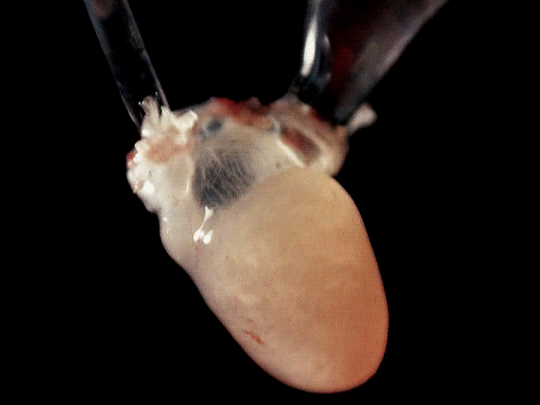
frog hearts (1951)
706 notes
·
View notes
Text
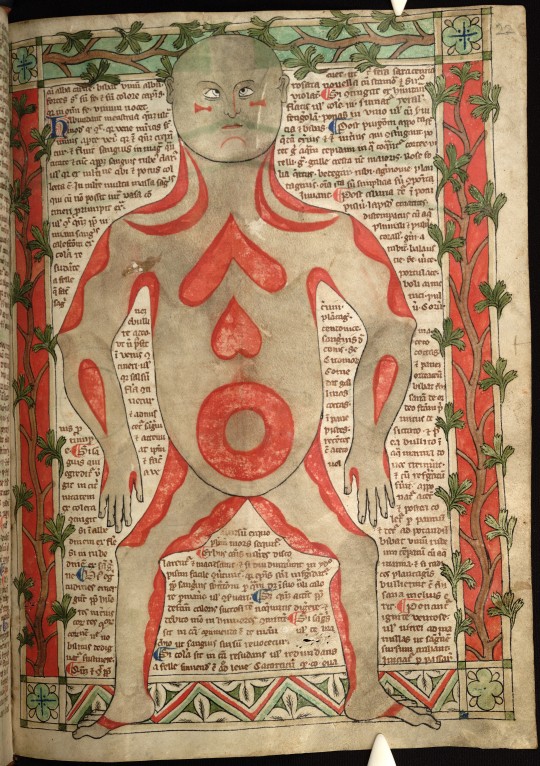
anatomical drawing of muscles in the human body
in a medical manuscript, england, c. 1250–1310
source: Oxford, Boudleian Library, MS. Ashmole 399, fol. 22r
183 notes
·
View notes
Text
Vera Ignatievna Gedroits - the openly lesbian, first woman professor of surgery in Russia, who worked alongside the Romanovs

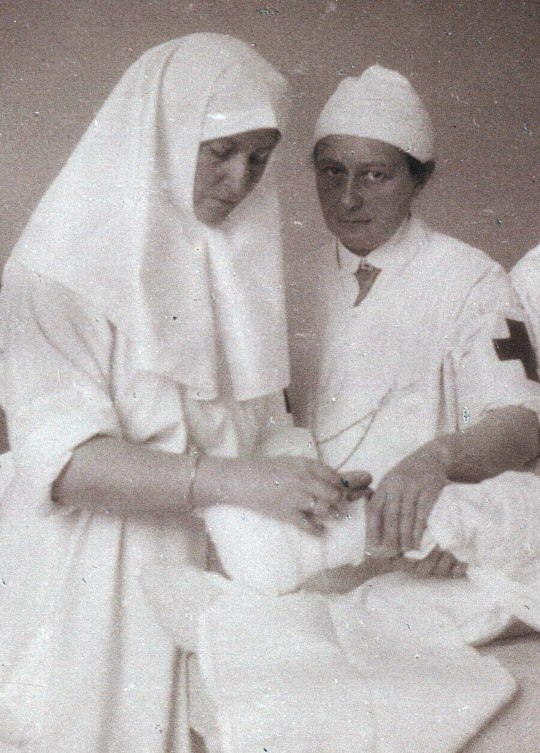
Princess Vera Ignatievna Gedroits was a doctor, surgeon, poet, and pioneer of medicine. Vera worked alongside Tsarina Alexandra and Grand Duchesses Olga and Tatiana Nikolaevna, working with the Red Cross to treat injured soldiers during the First World War.
** content warning for mention of suicide **
Born as a Princess of royal Lithuanian descent in 1870 in Kyiv, Vera is thought to have developed an interest in medicine following the passing of her little brother Sergei during childhood. Vera later wrote under the pen name ‘Sergei Gedroits’ in honour of him.
In 1892, Vera was arrested for participating in the Populist movement. Freed and undeterred, Vera was adamant to continue her medical studies. An open lesbian, Vera entered into a marriage of convenience with friend Nikolai Belozerov, permitting the obtaining of a new passport to travel, allowing her to pursue her dream of a medical career without the restriction of borders and her previous name being on police records. Despite their marriage being one of convenience, rather that romantic love, Vera and Nikolai were close friends, and stayed in contact through letters.
In 1903, Vera obtained the title of ‘female doctor’, but later that year attempted suicide. Vera’s mental health had declined due to an overwhelming personal family life, the death of her sister, exhausting workload, and breakup of a relationship with a lady in Switzerland. The following year, Vera had recovered, and the outbreak of the Russo-Japanese war led to her working in horse-drawn mobile hospitals.
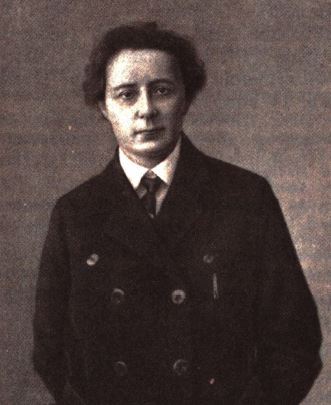
Working with wounded patients, Vera took detailed notes which allowed the making of the connection between injuries and the weapon used to inflict them. Interestingly, Vera did not shy away from abdominal operations, which was irregular due to previous thoughts that such injuries were ‘inoperable’. Often, patients with such injuries were refused surgery and were sadly left to pass away.
Following the War, Vera worked provincially, attending to 125,363 patients. This pioneering work was recognised by Tsarina Alexandra Feodorovna in 1909, who invited Vera to take the position of Senior Court Physician. Vera was the first woman to serve as a physician in the Imperial Palace. Vera wrote ‘Conversations on Surgery for Sisters and Doctors’ to help the Palace understand the profession. Vera would eventually write 58 scientific papers. Vera earned a Doctorate of Surgery on May 11 1912, the first woman in the history of the University of Moscow to do so.
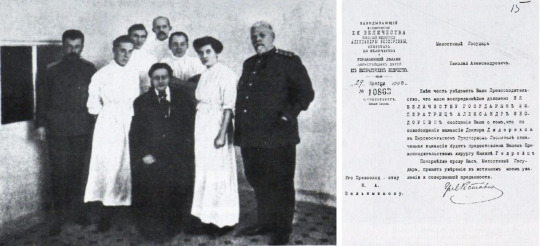
Following the outbreak of the First World War, Vera helped to install physiotherapy equipment and X-ray machines in hospitals to aid recovery. Vera taught Tsarina Alexandra Feodorovna and her daughters, Grand Duchesses Olga and Tatiana, medical work, and they assisted with operations. Vera worked alongside Imperial Physician Dr. Evgeny Botkin to help connect infirmaries to railways and supplies. Vera occasionally travelled to the front lines to help provide surgery directly at the scene, and in one case performed over 30 operations over a three day period.
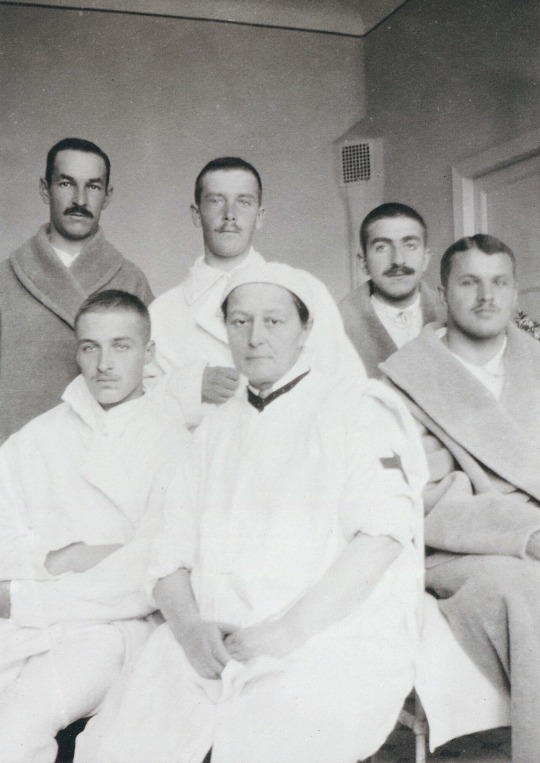
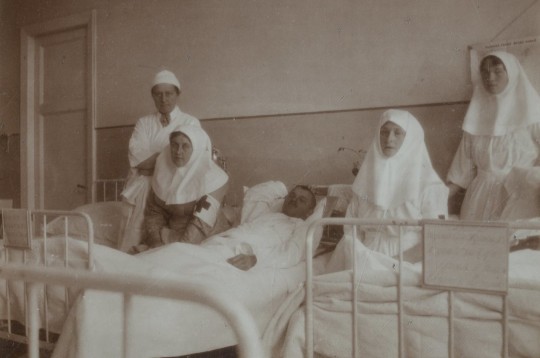
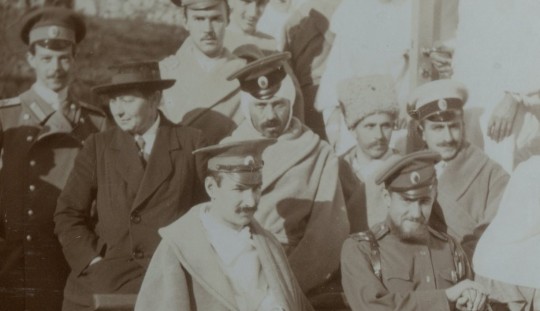
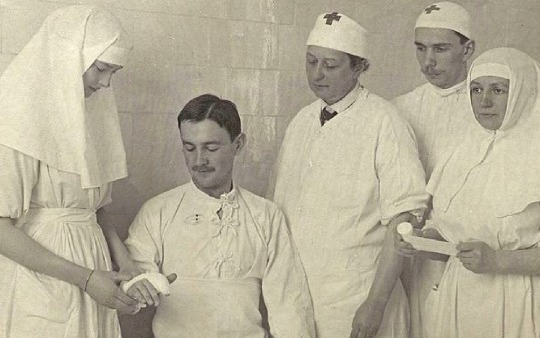
Vera is recorded as having little patience for the infamous Grigori Rasputin, with one source recording the shoving of Rasputin ‘into a corridor when he refused to get out’ of the way.
There are no records that suggest that the patients or the Romanovs objected to Vera's sexuality, though there was disapproval of her continuing to remain in Tsarskoe Selo to continue military surgery after the Revolution. If anything, she was renowned as one of the most capable and intelligent women of the era. Vera wore a surgeon's cap rather than the head coverings that nurses and Sisters of Mercy wore.
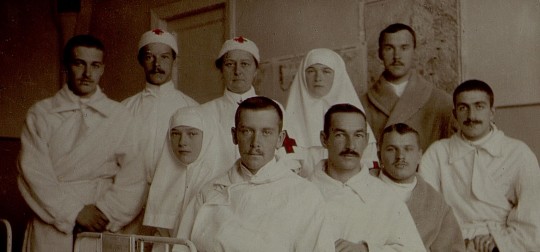


During the First World War, Vera met fellow nurse Countess Maria Dmitrievna Nirod-Mukhanova, a widowed maid-of-honour at the palace. The pair fell in love and started a relationship, which would last for the rest of Vera’s life. Maria had three children: Dmitri Feodorovich, Marina Feodorovna, and Feodor Feodorovich. The children knew about their mother's relationship with Vera, as they lived as a married couple whilst caring for and raising them. Some sources suggest that Vera and Maria had a marriage ceremony.

By the late 1920s, Vera was living with Maria, who worked as a surgeon, in Kyiv after the couple and Maria’s children escaped Revolution, taking refuge with monks. They spent eighteen years together. The pair lived as a married couple. In 1932, Vera passed away aged 61 after a diagnosis of uterine cancer. Maria continued Vera’s work by operating a pharmacy that provided free medicine to the poor. Maria passed away in 1965 aged 86. The above image is the only photo that has been attributed to her.
Vera defied all the social norms, becoming a pioneer of medicine and challenging traditions within the profession, saving thousands of lives in the process. Vera’s legacy lives on today.
SOURCES:
Hands that bring back to life. Vera Ignatievna Gedroits - surgeon and poet by V.G. Khokhlov
Beinecke Rare Book and Manuscript Library
Wartime albums of Olga Nikolaevna and Tatiana Nikolaevna, Last Romanovs on Flickr
The Princess who Transformed War Medicine - BBC
Princess Vera Gedroits: military surgeon, poet, and author by J.D.C. Bennet
The Diary of Olga Romanov : Royal Witness to the Russian Revolution by Helen Azar
Tatiana Romanov, Daughter of the Last Tsar : Diaries and Letters, 1913-1918 by Helen Azar and Nicholas B.A. Nicholson
#Vera Gedroitz#Vera Gedroits#lgbt history#lesbian history#Alexandra Feodorovna#Olga Nikolaevna#Tatiana Nikolaevna#Maria Nirod Mukhanova#medical history#Russian history#pride month#tw sui#image described#queer history
235 notes
·
View notes
Text
Tuberculosis and the Wild West
Spoilers for RDR2 , but it’s been since 2018, y’all. Trigger warnings for serious talk of severe terminal illness and severe stigma. As of 12/20 or 20/12, I have fixed some of the wording and added a few new things so please seriously head the warnings.
Ok, first, some background:
I've been studying TB since 2018; my father had a form of TB twice. I'm a historian, and one of my specialties is the history of medicine. Of course, you don't need to be a historian to write something like this. Also, please "like" and reblog, this sort of content takes time. Tons of pics of buildings, and info below of the “lore” and IRL people.
Background info about TB that y’all need to know: TB is still horrifically deadly and still a leading cause of death. To give you all an idea about how recent genuine scientifically proven treatments were- antibiotics targeting TB were not discovered until the late 40s. However, sanatoriums (TB hospitals) and similar TB-related places didn't all close until 1970. My sister was born in 1977.
To give you all an idea of how treeified people were of this disease, think of the stigma with the AIDS/HIV crisis in the 1980s or the early fears surrounding Covid.
TB is one of the three oldest diseases dating back to Ancient Egypt with early evidence appearing through ancient mummies. Starting around the 18th century, western people believed TB was a disease of the elite granting someone ethereal beauty, writing prowess, and artistic talents. It was known as a "romantic disease" and a "beautiful death" - both of which we know aren’t true.
Some western beauty standards are influenced by TB including rouged lips, blush, pale skin and a thin figure accentuated with corsets. However, the appearance was due to the patient wasting away. Patients actually had bloodied lips, feverish cheeks, a pale complexion from the illness and losing a large amount of body weight. That's why TB was initially called consumption.(There have been many other names for TB including the White Plague and Captain of All These Men of Death and phthisis which is Greek in origin.)
However, people eventually woke up and realized, "Oh wait, this isn't so sexy”
The disease spread like wildfire, especially in the cities affecting whole families as was seen with Doc Holliday. Soon, society blamed anyone who wasn’t a white upperclass person AND those who were "immoral . They believed it was someone’s own fault if they had the disease. People held a very e*gen*c view of the disease believing their activities or who their families were caused this.
Immoral in this instance includes thieves, sex workers, bar workers, drunkards, violent people, women who had children out of wedlock, said child born out of wedlock, and homeless people. Obviously, this isn't true. It was overcrowded spaces, poor hygienic practices, but also animals, especially cows and deer. Ironically, the deer/stag plays a huge role in RDR 2.
A few aspects from RDR 2 were inspired by Doc Holiday, one of the greatest gunslingers and outlaws in American history. His talents with the gun were considered by some as otherworldly. He and Wyatt Earp are most famous for the shoot-out at the OK Corral. Doc was dying of TB and headed west in order to potentially receive some medical attention, but found out that being an outlaw was great fun. Watch Tombstone for a fictionalized version of him. He had a very colorful life, but died of TB in Glenwood Springs, Colorado, at the age of 36. The same age as you know who.

This leads us to RDR 2 itself. The short answer about survival is potentially yes, but with some major stipulations. I have traveled across the country studying TB and visiting TB sites and have seen these locations firsthand. Read further to read how survival was possible and for pictures of key locations.
IF Arthur had rested, maintained a proper fat rich diet, rested in especially clean air and partook in light exercise, he MIGHT have had a chance. I would estimate a 60-70 percent chance based on my readings of TB survivors. The chance of survival could be more if he he headed West immediately after diagnosis.
The wealthy traveled to newly built luxury resorts, but most people lived in tent colonies, so Arthur would be very familiar with the site. Hell, if the gang moved West, and followed the conditions I mentioned above, he MIGHT have been able to recover without heading to a TB colony. The the gang wasn't stable, and they were being hunted down, etc.
However, people were pissed about the TB patients heading west to settle on "their land" (which is, of course, Native American land that was stolen). This pushed people to the outskirts of town and eventually, the establishment of sanatoriums which were tuberculosis treatment centers.
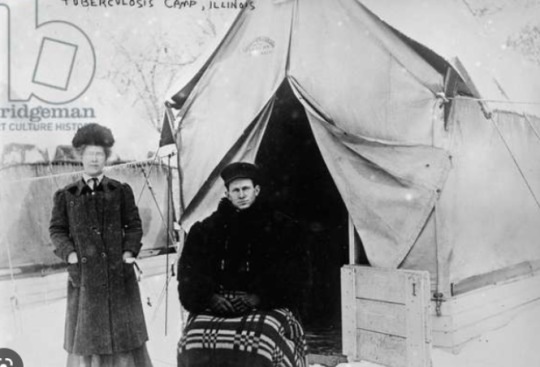
Both the picture above and below would be an example of the tents used by TB patients to camp out. The top picture was probably taken around the 1890s which is Arthur’s lifetime while the picture blow is probably from a later era like the 20′s based on the clothing. City people in big cities sometimes camped out on the roofs of their flats and apartments hence the setting of the second picture.

Due to the extreme fear, people were literally dropped off by families/friends or even government officials far outside of town. You did not want society to know that you had loved one with TB or else the stigma would affect you as well.
Later, TB patients were forcibly institutionalized. Many of these patients were ashamed of their affliction, but also felt further shame that their loved ones could be ostracized by society. I cannot stress enough how horrific this disease was and how tb psychologically affected the sufferer and its loved ones. Many tb sufferers never saw their loved ones again due to their families shunning them. I interviewed the elderly who remembered family members suffering from the disease and it still haunts their lives today. We see some of the shunning and stigma in the game, not just from the townspeople but from the gang. It's actually one of the reasons why I truly dislike a few unexpected gang members, for example.
At least Abigail, Charles, Tilly, John, and Sadie still treated him as a human. Hell, Even Molly was kinder to him and she was really suffering in chapter 6.
I will tell you right now, realistically speaking, in no way could Arthur have done anything at all in chapter six. I’m not only talking missions, but any sort of work. I won't go into graphic details, but one of the less graphic ones is that his hands would struggle to grasp objects, especially a gun. His joints would be too swollen. I know because I've seen it firsthand with my father and read plenty of accounts about it. Other than that, the game does a pretty great job of representing TB - however, Arthur could have been arrested or fined for spitting blood on the street which he did quite often in the game. Link goes to an academic article, but here is a more accessible link.
By 1899, people had been heading west for TB treatment for decades. People of all races headed west to Colorado, California, New Mexico, and Arizona being the prime locations. Dry air and or mountainous air were your best bets. Colorado was quite literally known as THE place for TB tourism as it was called. It was one of the first major waves of health tourism in the history of the USA.
Another famous person and case study is Dr. Edward Livingston Trudeau. He himself suffered from tuberculosis who sent up tuberculosis huts in Saranac Lake, NY. For further study, other key locations include Asheville, North Carolina and in the mountainous regions of Pennsylvania. They huts looked like this:

These were also in Colorado Springs, Colorado Springs was full of them and they are still occasionally found in people’s yards today.

I visited one in the Pioneer museum in Colorado Springs. I can post my pictures later, but this is one found in an outdoor museum.

The TB patients had a very strict regimen of never leaving the bed and used bed pans. Healthier patients had access to their own private toilet. Stronger patients could work on doctor approved exercises, while even healthier TB patients who weren't ready to leave facilities yet could spend the rest of their time working around the camp or sanatorium.
Below is how Arthur would have looked getting treatment if he wasn’t in a hut or tent:
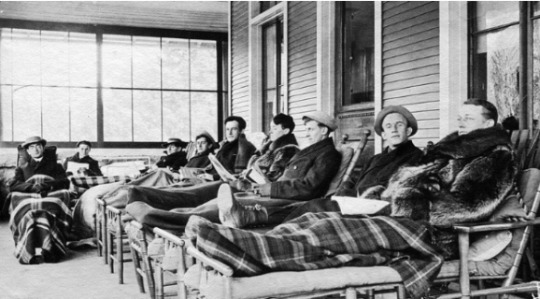

Above: Women receiving treatment. Below: An 1899 TB facility. Most tuberculosis sanitoriums were built from 1905 onwards so John’s era was FULL of them. The peak of the sanitarium era though was 1920-1940ish.
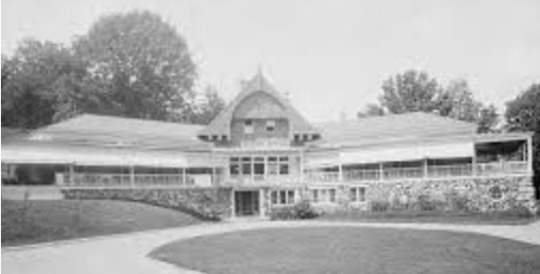
The problem is TB patients had a very chance of suffering from pneumonia once TB went into remission. It's happened in tons of my case studies. If Arthur could have survived both TB AND pneumonia, then he would have been considered "Ok". Not good, but “Ok”. However, I can't predict how long he would have lived afterwards. Some TB patients had tuberculosis come in a second wave. This is, unfortunately, very common. Some people lived a few months, a few years and some lived decades after surviving the second wave.
Fortunately, survival after two waves include people who lived hard, like Arthur. Trudeau lived till 68, and that is after 2 bouts of TB and pneumonia, with the third wave of TB being his cause of death.
This is very likely a reason why Arthur would have been in New Austin if they had kept him in the epilogue and continued the TB storyline. I personally do NOT think John was ever going to kill him.
MISC NOTES:
Related to RDR:
Important side note: Sex workers were especially blamed for spreading TB which makes sense because of the contact with multiple people, but it's not that different than someone who works at a factory every day, runs a shop or works at the docks, or in similar situations. Anyone could spread it. This is why it is actually technically very offensive to ask someone like Abigail if she had TB because it would be a way to imply she is unclean as a person. (Which people in the game already believe with some of the fandom similarly treating her poorly.) The history of sex work is my other specialty, so I am very familiar with their history. I will say, from what I gathered, sex workers did NOT seem to be that much more affected than others, but at the same time, we don't have a lot of records of people who weren't white upper-class Christian men. So we have these records if these people were arrested, but remember that all of the examples of people I mentioned were viewed as second-class citizens. Therefore, we have hardly any records of sex workers as actual people and historians have to be creative to find other ways to research them properly.
Modern day: TB is also becoming antibiotic-resistant at a frightening pace. This will become a massive problem. Treatment requires at least two antibiotics - streptomycin being the main choice for the primary antibiotic. This treatment lasts months, and these antibiotics are insanely strong. They can really mess with the body's system. I've seen it. My father was one of the lucky ones only having to take the pills for 8 months. Many others take it from a year to even 18 months. Other people take the pills and undergo radiation therapy to treat TB. Modern science can't produce enough new antibiotics to outpace it, but alternative treatments do appear to be promising.
If you want me to write more about TB or for any other history questions, feel free to send me an anon/message.
Additional pics:
Below: Sanitarium built around 1905.

Below: An example of a finished Sanatorium in 1911ish:

#rdr 2#arthur morgan#john marston#van der linde gang#red dead redemption 2#abigail marston#abigail roberts#charles smith#sadie adler#mary-beth gaskill#mary linton#wild west history#medical history#history of medicine#19th century history#tw terminal illness#meta#20th century history#tuberculosis#consumption#wild west#doc holliday#long post
784 notes
·
View notes
Text

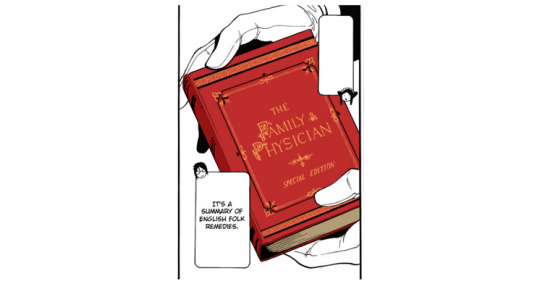

In the Green Witch arc, Sebastian presents a rather interesting book to Sieglinde when she requests to have something to read. The book is called The Family Physician, and it is in fact replicating a real medicinal work of the Victorian era.
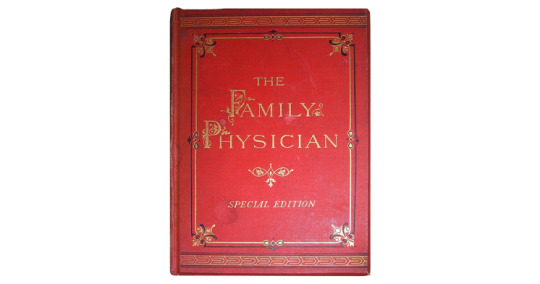
The Family Physician: A Manual Of Domestic Medicine was published in London, England, by Cassell & Company in the year 1883. It is one of many books of this kind as at the time family manuals of medicine were becoming more and more popular. Of course, books were still rather expensive to print and were majorly available to the rich.
As many were living in estates outside of the city centers and some traveled abroad, physicians were not always readily available. With that, more and more rich Victorians would rather have a book of medicinal remedies at home to "replace" a visit from a doctor.
The book Sebastian is showing in the arc is one of the later editions by the physicians of the London hospitals. The special edition Family Physician featured in the manga consists of four volumes and includes a diverse list of treatments for many types of illnesses.

Now, Yana does include two supposed remedies used in that book but only one of them is found on the pages: opium tincture. Laudanum was prescribed for various illnesses. As for the bacon, it is a real medical practice of the Victorian era but one recorded in The Successful Housekeeper (1888), not in this manual.
Sebastian has previously stated that he would get familiar with the medicinal treatment options of the time to assist Ciel with his health problems. We can safely assume that this handbook manual is used by him rather often to help young Lord during his various instances of sickness.

This book consists of multiple categories of illnesses that would take a long time to cover fully, but here are those that Ciel canonically either goes through or is likely to go through due to his known chronic condition (asthma):
Night Terrors
Asthma
Cold
Cough
Fever
The sort of treatment that Sebastian would put Ciel through, were he to truly follow the book, is bizarre.

Do not follow these instructions. They are highly outdated and do not follow any medical requirements. Herbs, plants, and chemicals mentioned in this post are highly toxic and should not be ingested or inhaled.

Night Terrors
Night terrors are recognized by Victorians as recurrent and relatively safe, as they are "rarely precursors of fits or epilepsy", though they may be hard to handle, especially in younger children.
In case that a Victorian child was suffering from nightmares, or night terrors as they equated the two, physicians recommended rhubarb and soda also known as Gregory's powder. Combined with a light and digestible meal, this mixture, which is currently regarded as a laxative, was to ensure that the sleep of the child is undisturbed through the night.

Asthma
During the Victorian era, asthma was not recognized as an obstructive disease of lungs, but rather as a neurological condition. Physicians of the time were seemingly very well-aware that asthma was a difficult and longterm condition even if they did not precisely understand its nature; sometimes referring to it as psychosomatic.
Within the treatments that Ciel would have realistically gotten were he, as a Victorian child, to have the kind of asthma attacks that he has had in the manga are:
I. Tobacco, which was believed to relieve paroxysms - sudden asthma attacks.
The book Sebastian has provided us with says that tobacco would be especially beneficial for non-smokers who have not established tolerance to cigarettes, pipes, and cigars. Even though individuals who used this method would grow "pallid" and "damp with prespiration" after the process, their asthma attack would be "prevented".
It is possible to assume that with the repeated, consistent smoking pattern Victorian asthmatics tried to balance out their breathing rhythm.
II. Lobelia inflata, also known as puke weed, is another type of tobacco recommended for asthma, though this time it is to be consumed by ingestion in a form of a tincture mixed with water. It was believed that this tobacco helped with asthma "related to indigestion".
The book does state that its authors are unsure whether the plant is very effective as some patients have fallen sick after the use; which is no surprise to the modern reader as lobelia inflata has been discovered to be a toxic plant.

III. Stramonium, also known as thorn-apple, is a kind of medicine recommended by the Victorian physicians when smoking tobacco was not enough.
The leaves of the plant, which is highly toxic due to multiple alkaloids within it, would be crushed and smoked. Smoking stramonium before sleep for prophylactic reasons or at the beginning of an asthma attack was generally considered an effective treatment that worked "like magic".
IV. Cigares de Joy, "anti-asthma" cigarettes created by a Frenchman, are highly regarded by the authors of the book.
Like many other medicinal treatments of the Victorian era, they were, of course, bad for your health as they contained stramonium and arsenic.
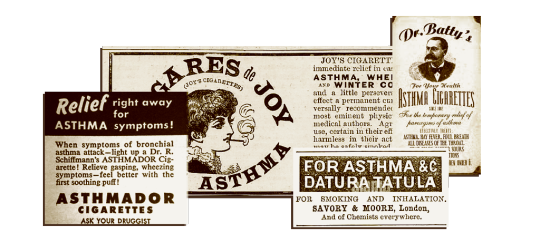
V. Coffee is probably the only non-toxic method of treating asthma that Victorian doctors suggest.
However, even with coffee one can't hope to have much satisfaction from the treatment: it is to be given very hot, black (pure cafe noir), without any milk, and on an empty stomach in small quantities. Bigger dosages are advised against while taking coffee with a meal is cosidered to be a cause of asthma attacks.
VI. Nitre-papers are, practically, papers with potassium nitrate.
The papers were meant to be burned so the fumes fill the room.
The chemical compound of nitre-papers is an irritant and causes damage to the lungs, though Victorian doctors describe multiple cases of children and adults alike "peacefully" falling asleep around ten minutes into the paper burning. The latter is probably no surprise as potassium nitrate fumes have an adverse effect on the human body, causing nausea and dizziness.
VII. Nitrite of amyl is one more nitric chemical compound that is recommended by the Victorian doctors to inhale in order to treat asthma.
Now, this chemical is highly toxic in all forms and especially so in direct inhalation and ingestion; it can cause blindness, brain damage, lung scarring, and death.

VIII. Chloroform is yet another questionable way of managing asthma in the Victorian era.
While the authors of the book can be given credit for mentioning that overdoing chloroform is never the aim, and even provide a story of a man who died doing so, they do still praise the method greatly. According to the manual, chloroform is to be applied in a few drops on a handkerchief one can press to the nose and inhale through.
It is rather clear here that Victorians truly did see asthma as a disturbance within the nervous system and provided methods of sedating the patient.

IX. Ipecacuanha, an imported plant native to Brazil, Costa Rica, Nicaragua, Panama, and Colombia, is a remedy that the authors seem rather perplexed about. They do recommend it as an effective method of asthma treatment but they do not specify how it is to be applied.
We are left wondering how exactly Victorians used this plant. Ipecacuanha, or ipecac as it is known within the medical field now, is highly toxic in all its forms and is especially dangerous to ingest. Brain damage and organ failure are only some side effects of ignoring safety precautions.
X. Potassium iodide is a medication recommended for ingesting directly in the amount of two tablespoons three times a day. Praised for postponing or even fully stopping asthma attacks, this medicinal treatment was highly regarded by the Victorian doctors.
It is worth mentioning that potassium iodide has adverse side effects and is an allergen for many people. However, it is a recognized medical supplement that should be taken only, if ever, upon doctor's prescription.

Cold
Victorians recognized that cold was a rather complicated condition as it could either be a simple cold of a precursor to other, more serious, diseases: bronchitis, pneumonia, quinsy, consumption (tuberculosis), pleurisy, rheumatism, neuralgia, and more.
Doctors seemed to believe that the main cause of a common cold was dampness rather than anything else: a damp bed, a damp seat, a damp house or room, a damp robe, and more. Bathing for a prolonged amount of time was discouraged as it "caused colds".
The physiological nature of a cold was that it was seen as an inflammation of a mucuous membrane within the air-passages.
Victorians recommended that one who has caught a cold should stay quiet and not talk much, not eat too much food though drink plenty of water. The most jarring thing is, they recommend - within the book in Sebastian's possession - that colds are to be immediately treated with an aconite tincture. Needless to say, aconite is toxic in all forms and causes nausea and dizziness, vomiting, heart and lung problems, as well as death.

Out of safery reasons, we will abstain from providing any sort of recipes here. Aside from aconite, or when aconite was simply not enough, Victorian doctors suggest the following remedies:
Camphor
Phosphorus
Belladonna
Bryony
Nux vomica
Ipecacuanha
Bismuth
Arsenic
All of these ingredients are highly toxic and their effect on the human body greatly varies. Regardless, these should not be taken in absolutely any form.
Cough
Victorians recognize multiple varieties of a cough and state that there's no universal panacea for all of them. Still, they do recommend a few home remedies that are mixtures made of rather unusual components.
One suggests mixing a Paregoric elixir, which is a highly toxic substance containing deadly hydrogen cyanide, with oxymel, cascarilla, and chloric ether. Another proposes a method to treat dry cough: mixing morphia, hydrogen cyanide, and chloric ether together before ingestion.

Other cold treatments include:
Aconite [☠]
Alum [☠]
Asafoetida [!]
Belladonna [☠]
Chamomile oil
Chloroform [☠]
Coltsfoot [!]
Drosera
Gelsemium [!]
Ipecacuanha [☠]
Nitric acid [☠]
Sulphur [!]
Tartar emetic [☠]
☠ - toxic, deadly! - unsafe, may cause health problems for some people
Fever
The last condition that we can see Ciel canonically go through is a fever, which he seems to catch during the events of the Book of Circus arc. Now, treatment of a simple fever in Victorian times was rather unique as the doctors suggested using aconite or belladonna tincture to reduce the fever.
If it happened so that a patient's fever has not gone down after a long while, arsenic mixture is used. If nothing else helped and the fever is accompanied by shooting pain, highly toxic bryony is applied.

Thankfully, during the cases of remittent fever lasting for many days none of these mixtures were applied. Instead, the patient would be given ice to suck, cold water to drink, or some lemonade. Vomiting was to be calmed down with application of chloroform or ipecacuanha. Quinine, which has many dangerous side effects, would also be given. The most the patient would get aside from such dangerous medicine is nutritious meals and a lot of water.
Overall, it seems like using The Family Physician for treatment of many conditions that boys like Ciel would go through in real life Britain would cause more disadvantages than benefits for the patient. Over-reliance on toxic stimulants and deadly chemical substances could not possibly be good for anyone whose health was compromised.

Edits of the manga pages are made by us.
Please, do not use them.
#༺♚༻ 𝕬nima e 𝕮uore ༺♞༻#༺☤༻ 𝕸𝔢𝔡𝔦𝔠𝔦𝔫𝔞 ༺☤༻#black butler#kuroshitsuji#sebastian michaelis#ciel phantomhive#sieglinde sullivan#victorian era#victorian history#medical history#historyblr
157 notes
·
View notes
Text
Fun (recent) Medical Technology History Facts
The first EKG was taken in 1901, the machine looked like this:

CPR was invented about 10 years after the defibrillator came into use (1960s vs 1970s).
The first CT scans on humans were taken in 1973. They took 1-2 hours to scan 8-12 images, which printed out on Polaroid film. They looked like this:

The first MRI machine image was taken in 1980. It was of a bell pepper:
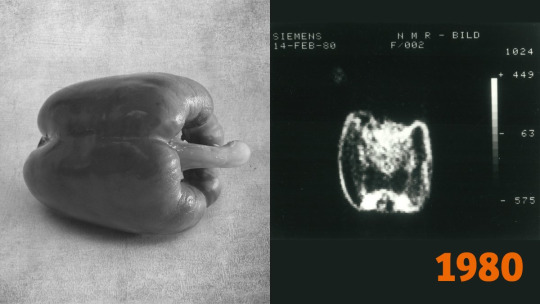
The first bioethics committee determined who got to use the first 6 dialysis machines for chronic use in 1960 (dialysis was invented in the 1940s but was only used for acute care, not long-term).
Metered Dose Inhalers didn't exist until the 1950s.
Heart transplants and oral contraception were invented in the same decade- the 1960s
Routine handwashing in hospitals and food service didn't start until the 1980s.
We didn't know what viruses looked like until the 1970s.
Human insulin didn't exist until the 1980s (prior to that we only had pork and bovine insulins).
83 notes
·
View notes